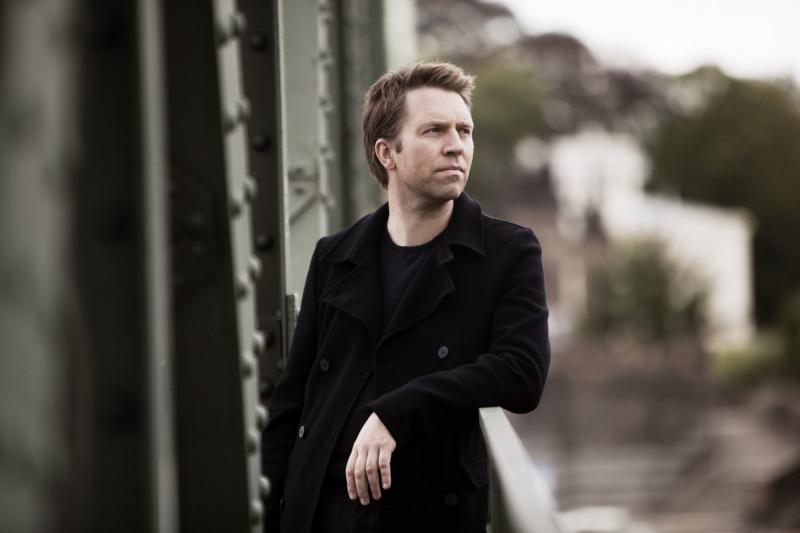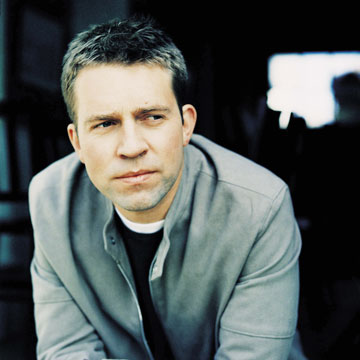Leif Ove Andsnes, Wigmore Hall | reviews, news & interviews
Leif Ove Andsnes, Wigmore Hall
Leif Ove Andsnes, Wigmore Hall
A characteristically poised performance from the Norwegian pianist

If ever there was such a thing as a safe pair of pianistic hands then they would belong to Norway’s Leif Ove Andsnes. There’s a cool, patrician control to everything he does that speaks to thorough preparation, careful interpretative choices and immaculate technique. Thrill-seekers and risk-takers may want to look elsewhere, but for everyone else Andsnes offers the chance to hear cleanly through to the skeleton of a work.
Currently deep into his Beethoven Journey with the Mahler Chamber Orchestra, Andsnes’s affinity for the composer seems only to have grown. The strangely slight Piano Sonata in F Op 54 – the palate cleanser between the Waldstein and the Appassionata – might have been an unlikely opener but proved a natural fit for the pianist. A decorously poised minuet gives way to a second theme in romping octaves, which can all too easily sound like an exercise if treated with any less than Andsnes’s precision. The passagework continues all the way through to the finale, and this uncomplicated statement of musical skill set us up for the rather more inscrutable Bartok Suite Op 14 which followed.
Andsnes is surely among the purest, most technically rigorous performers of his generation
There’s a charm to this miniature that comes from giving almost nothing emotional away but doing it with so much wit and poise that it’s impossible not to be beguiled. Movements end mid-gesture, huge climaxes resolve into a shrug. If the comedy wasn’t pointed as broadly as it might be by Andsnes, then he compensated in the ferocious rhythms of the perpetuum mobile sections, bringing every possible gleaming inch of salon polish to the intellectual repurposing of Bartok’s folk melodies.
 Playfulness wasn’t especially dominant in Beethoven’s Sonata in A Op 101 either, where the mock-martial solemnity of the second movement can gain so much energy from a blunter treatment. The chords of the opening movement however were balanced and weighted with Andsnes’s trademark care, and the sonata offered him every opportunity to exploit this in the contrapuntal webs of melody that Beethoven creates. He was more comfortable in these discursive sections than the passages of passionate, melodic monologue, and the question of the interval was whether a second half of Liszt and Chopin would prove emotionally too much for a pianist happier to describe feeling than display it.
Playfulness wasn’t especially dominant in Beethoven’s Sonata in A Op 101 either, where the mock-martial solemnity of the second movement can gain so much energy from a blunter treatment. The chords of the opening movement however were balanced and weighted with Andsnes’s trademark care, and the sonata offered him every opportunity to exploit this in the contrapuntal webs of melody that Beethoven creates. He was more comfortable in these discursive sections than the passages of passionate, melodic monologue, and the question of the interval was whether a second half of Liszt and Chopin would prove emotionally too much for a pianist happier to describe feeling than display it.
Liszt’s “Pensées des morts” from the Harmonies poetiques et religeuses is an epic in miniature, roaming over the lower extremes of the piano in an attempt to add weight and drama to a fairly flimsy musical structure. It’s an entertaining enough showpiece, but it says so much about Andsnes’s taste and technique that it verged on the vulgar under his touch, Liszt’s harmonic vampings finding nowhere to hide among the clean, classical lines of his playing. Chopin fared better, with the Nocturne in C minor trickling liquid gold in the right hand, and the Ballade in F minor fretting with beautiful insistence at the frayed edges of its theme.
Andsnes is not without his weaknesses, but I’d take these any day over the over-demonstrative strengths of other pianists. Together perhaps with Christian Tetzlaff (by no coincidence, surely, a frequent collaborator), Andsnes is surely among the purest, most technically rigorous performers of his generation, a musician where so often we find only a pianist.
Explore topics
Share this article
The future of Arts Journalism
You can stop theartsdesk.com closing!
We urgently need financing to survive. Our fundraising drive has thus far raised £49,000 but we need to reach £100,000 or we will be forced to close. Please contribute here: https://gofund.me/c3f6033d
And if you can forward this information to anyone who might assist, we’d be grateful.

Subscribe to theartsdesk.com
Thank you for continuing to read our work on theartsdesk.com. For unlimited access to every article in its entirety, including our archive of more than 15,000 pieces, we're asking for £5 per month or £40 per year. We feel it's a very good deal, and hope you do too.
To take a subscription now simply click here.
And if you're looking for that extra gift for a friend or family member, why not treat them to a theartsdesk.com gift subscription?
more Classical music
 From Historical to Hip-Hop, Classically Black Music Festival, Kings Place review - a cluster of impressive stars for the future
From quasi-Mozartian elegance to the gritty humour of a kitchen inspection
From Historical to Hip-Hop, Classically Black Music Festival, Kings Place review - a cluster of impressive stars for the future
From quasi-Mozartian elegance to the gritty humour of a kitchen inspection
 Shibe, LSO, Adès, Barbican review - gaudy and glorious new music alongside serene Sibelius
Adès’s passion makes persuasive case for the music he loves, both new and old
Shibe, LSO, Adès, Barbican review - gaudy and glorious new music alongside serene Sibelius
Adès’s passion makes persuasive case for the music he loves, both new and old
 Anja Mittermüller, Richard Fu, Wigmore Hall review - a glorious hall debut
The Austrian mezzo shines - at the age of 22
Anja Mittermüller, Richard Fu, Wigmore Hall review - a glorious hall debut
The Austrian mezzo shines - at the age of 22
 First Person: clarinettist Oliver Pashley on the new horizons of The Hermes Experiment's latest album
Compositions by members of this unusual quartet feature for the first time
First Person: clarinettist Oliver Pashley on the new horizons of The Hermes Experiment's latest album
Compositions by members of this unusual quartet feature for the first time
 Gesualdo Passione, Les Arts Florissants, Amala Dior Company, Barbican review - inspired collaboration excavates the music's humanity
At times it was like watching an anarchic religious procession
Gesualdo Passione, Les Arts Florissants, Amala Dior Company, Barbican review - inspired collaboration excavates the music's humanity
At times it was like watching an anarchic religious procession
 Classical CDs: Camels, concrete and cabaret
An influential American composer's 90th birthday box, plus British piano concertos and a father-and-son duo
Classical CDs: Camels, concrete and cabaret
An influential American composer's 90th birthday box, plus British piano concertos and a father-and-son duo
 Cockerham, Manchester Camerata, Sheen, Martin Harris Centre, Manchester review - re-enacting the dawn of modernism
Two UK premieres added to three miniatures from a seminal event of January 1914
Cockerham, Manchester Camerata, Sheen, Martin Harris Centre, Manchester review - re-enacting the dawn of modernism
Two UK premieres added to three miniatures from a seminal event of January 1914
 Kempf, Brno Philharmonic, Davies, Bridgewater Hall, Manchester review - European tradition meets American jazz
Bouncing Czechs enjoy their Gershwin and Brubeck alongside Janáček and Dvořák
Kempf, Brno Philharmonic, Davies, Bridgewater Hall, Manchester review - European tradition meets American jazz
Bouncing Czechs enjoy their Gershwin and Brubeck alongside Janáček and Dvořák
 Solomon, OAE, Butt, QEH review - daft Biblical whitewashing with great choruses
Even a top soprano and mezzo can’t make this Handel paean wholly convincing
Solomon, OAE, Butt, QEH review - daft Biblical whitewashing with great choruses
Even a top soprano and mezzo can’t make this Handel paean wholly convincing
 Two-Piano Gala, Kings Place review - shining constellations
London Piano Festival curators and illustrious friends entertain and enlighten
Two-Piano Gala, Kings Place review - shining constellations
London Piano Festival curators and illustrious friends entertain and enlighten
 Echo Vocal Ensemble, Latto, Union Chapel review - eclectic choral programme garlanded with dance
Beautiful singing at the heart of an imaginative and stylistically varied concert
Echo Vocal Ensemble, Latto, Union Chapel review - eclectic choral programme garlanded with dance
Beautiful singing at the heart of an imaginative and stylistically varied concert
 Scott, Irish Baroque Orchestra, Whelan, RIAM, Dublin review - towards a Mozart masterpiece
Characteristic joy and enlightenment from this team, but a valveless horn brings problems
Scott, Irish Baroque Orchestra, Whelan, RIAM, Dublin review - towards a Mozart masterpiece
Characteristic joy and enlightenment from this team, but a valveless horn brings problems

Add comment